
Everything You Need To Know Before Building a Gabion wall
Published: 24/01/2023 | Updated: 01/06/2023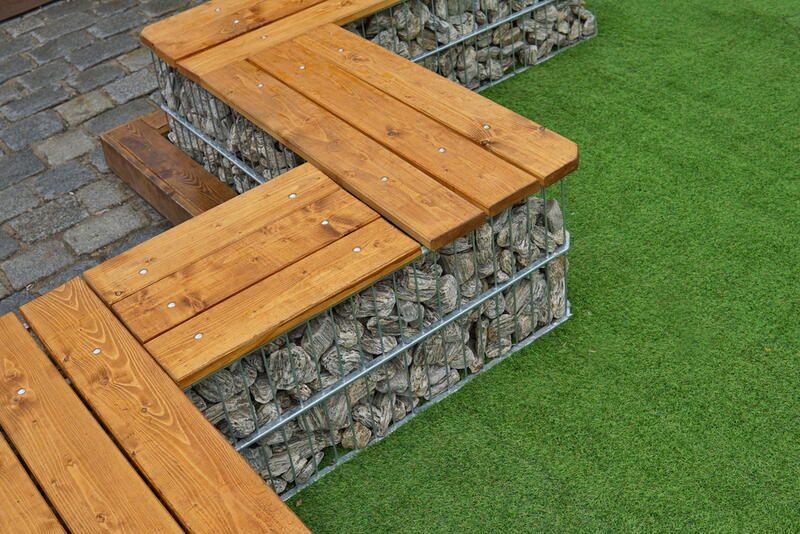
Many hardscaping elements are usually used in most landscape designs. Depending on what the feature is, it can add harmoniously to the natural elements or contrast beautifully.


But most of the time, they have more functions beyond aesthetics that make them appealing to homeowners.
Gabion Walls are one of those hardscaping structures that more and more homeowners are reverting to now. And for very good reasons!
This article will explain everything you need to know about gabion walls, their benefits, and their disadvantages. And help you decide whether to include them in your yard or not!
What Is Exactly A Gabion Wall?
The word gabion etymologically comes from the Italian word, gabbione which means big cage and is of itself an augmentative of the word gabbia, meaning cage.
And that is exactly what a gabion wall is. A gabion wall is basically a cage shape made up externally of a wire container and filled most usually with rocks. But gabion walls can also have a different fill material like concrete, stone, sand, and soil.
Nowadays, gabion walls are becoming very popular with homeowners to build in their outdoor landscapes. But gabions actually go way back!
It's believed the earliest gabion wall-like structures go back over 7000 years when they were used to protect the bank of the Nile river.
And since then, they have been relied upon in civil engineering in stabilizing shorelines, stream banks, or slopes against erosion. As well as gabion retaining walls around dams to direct the force of water.
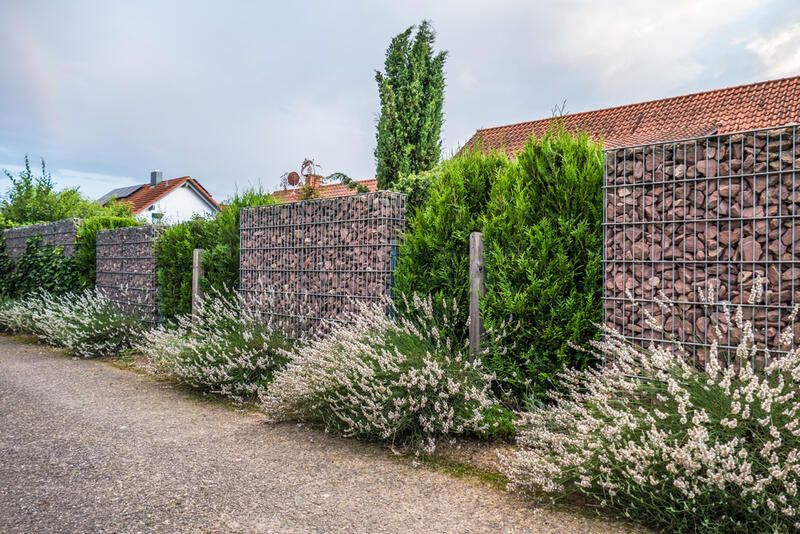
Gabion walls have also been used in various forms of road building. And military applications to protect infantry, army corps, and artillerymen from enemy fire.
The most stunning and impressive example of gabion baskets construction in that military sense is the foundation of San Marco Castle in Milan, which Leonardo da Vinci actually designed.
This is only one example that shows how gabion walls blur the line between artistic design and crucial practical functions.
This is one of the reasons why gabion walls are so favored by such different industrial fields and different homeowners, but it's not the only one.
To help you decide if gabion walls are right for your home, we have gathered for you all the main reasons why gabion walls are so incredible (and all the reasons why they might not be for you!)
Pros of Gabion walls
Different types of gabion walls, gabion retaining walls, and gabion baskets obviously exist for those different functions.
(The one closely related type of structure that shouldn't be mistaken for a gabion wall, is bastions, which are made with geotextile to allow it to be filled with a granular soil fill, which isn't normally used as a gabion fill material)
But the basic structure of a gabion wall remains the same. And has been in use for so long for those reasons that make it hard to ignore how brilliant this structure is for landscaping too:
Inexpensive Cost
While the cost of gabions varies according to different aspects, like the type of wire mesh, and the type of fill materials, generally speaking, building a gabion wall is relatively inexpensive and affordable for most homeowners.
Since the baskets are made of galvanized wire mesh, even the best types won't cost as much as other construction materials like concrete. The filling materials won't be as costly either, especially if they are resourced locally, as there won't be additional money for transportation.
But here, you definitely want to choose a quality natural stone!
And if your yard demands a smaller gabion wall, then you can also save money on labor costs as it would be relatively easy to put it together yourself.
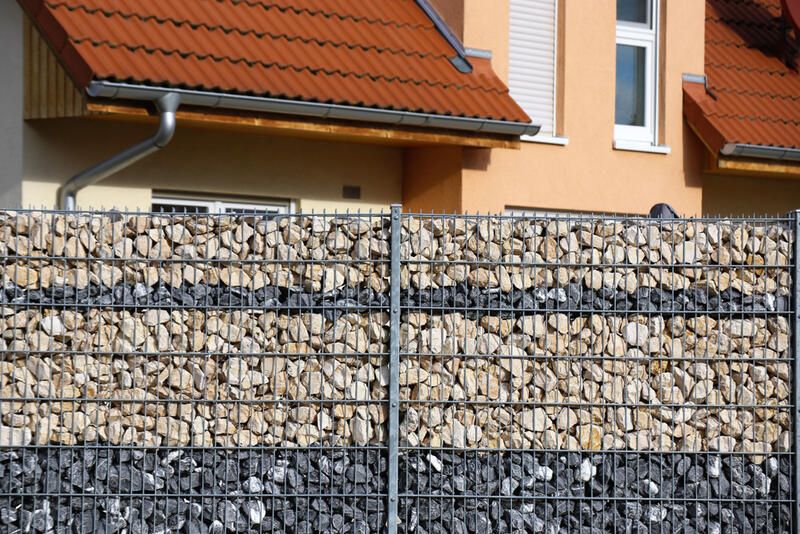
Built Quickly
This also depends on how big you want your gabion wall to be and/or how much space your yard can offer.
But even with big ones, gabion walls simply don't require the infrastructure and foundation other walls would need.
Which means it can be put together fairly rapidly. Erecting the baskets, filling them, then closing them properly takes little time in comparison with other structures.
Easy to Install
While bigger gabion walls would require a professional engineer to get it absolutely right, with smaller yard ones you can easily learn to do it on your own.
All there is to be done is the preparation for the ground the basket will take, the filling, and then closing the basket tightly.
As a tip, pick the large stones, and the prettier ones of course, for the visible lines, while stacking the center with the smaller, less attractive rocks.
Long Lasting
Gabion walls as structures have a very long life span, averaging between 50 and 100 years.
And while, like any metal, gabion baskets are affected by the environment, if your house is inland and isn't exposed to a lot of salt, it'll rust much more slowly.
Especially if you go for quality gabion baskets at the beginning, your gabion wall is going to last for a very long time.
Low Maintenance
Once installed, gabion walls require very little to no maintenance. There is no need for cleaning.
So once you have your gabion wall, you can put it behind your back and know it won't require more work from you.
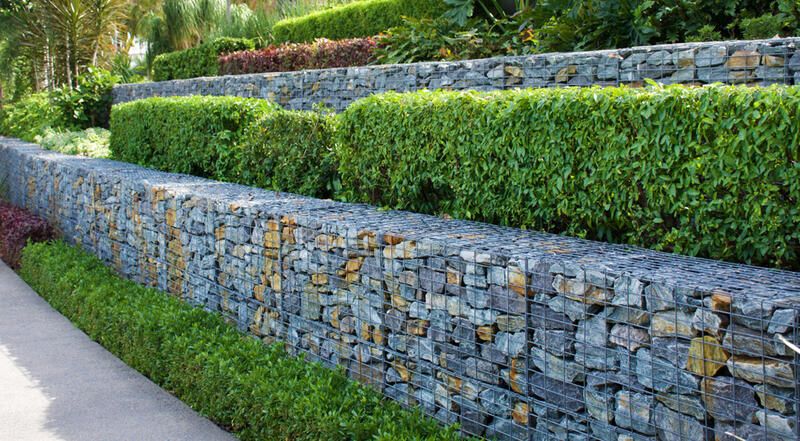
Breathability (Permeable Structures)
The nature of the way gabion walls are structured means there is space between the stones to allow air movement. This makes the structure very breathable.
Because of this, unlike concrete walls, gabion baskets don't build up hydrostatic pressure that can threaten the wall's integrity and stability.
Erosion Control
This is one of the most important benefits of gabion walls that have made gabion walls so useful and still in use now.
The stone fills absorb the force of flowing water and dispatch it, protecting the land from erosion. and providing soil stabilization.
You might think this won't matter for a commercial gabion wall in your yard, but if you have a pond or live near a river or stream, a gabion wall will protect your land from the water.
Yard Drainage
Retaining walls are designed so that the water trickles through. This means your yard will be protected from over-saturation and there will be no need for drainage.
Flexible to Move
As gabion walls aren't fixed to the earth the way other walls like concrete walls are, that doesn't only mean that there is internal flexibility to handle small ground movements, but that they can form flexible structures for possible re-location.
With some work, you can de-construct the wall and move it to another spot if you think it'd look more attractive in another place.
Maybe you'd like to change the material of the fill for aesthetical reasons, or anything else, you'll have the freedom to do so.
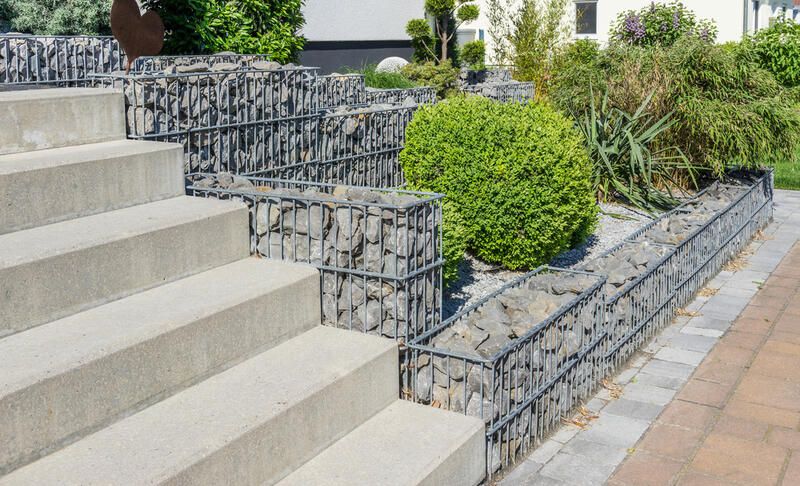
Cons of Gabion Walls
While the benefits of gabion walls way outweigh the possible disadvantages, you still should know about them to make an informed decision for your yard!
Possible Heavy Equipment (For Larger Gabion Walls)
If you have a large yard and was thinking of having an accommodating large wall, then the large wall would require heavy equipment.
The weight will make it hard to work on your own and the construction would be best to be erected by a professional then.
DIY Can be Labor Intensive
Again, this is only for larger stacked cages, not for any gabion construction. But if you're going for a large one, then it won't be that easy to build on your own. It'll take a lot of labor and would generally be safer with a professional.
The Industrial Look Might Not Fit With the Aesthetics of Your Landscape Design
This is a purely subjective point. To many people, the aesthetics of gabions are the biggest pro rather. The structure can enhance the beauty of this around it. But that depends on the style of your garden.
This isn't something you should worry about though, as you can contact Shrubhub from the comfort of your home and arrange for a 3D view of your landscape with the gabion wall in mind to best see if it looks like what you have in mind (or even better!).
This way you don't have to worry about whether the aesthetics will fit or not after implementation, you'll know from the start!


